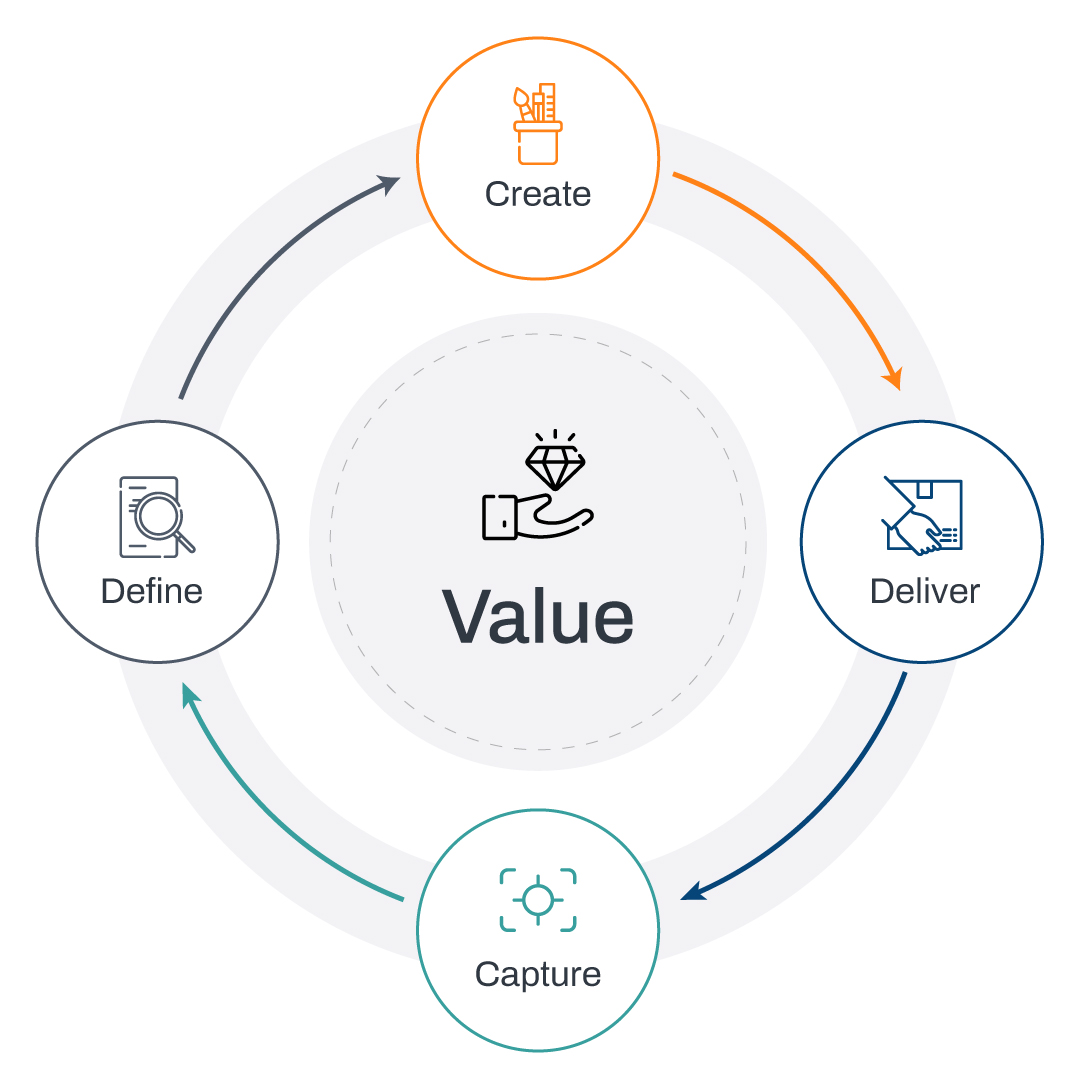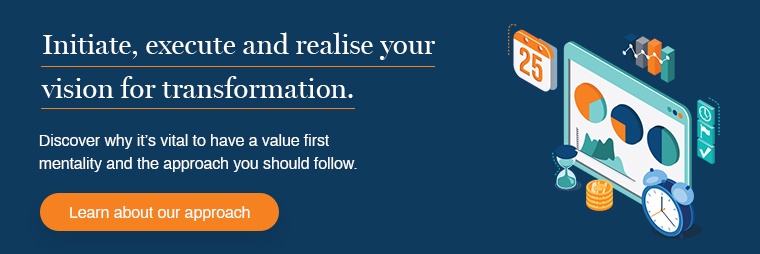As the name suggests, digital transformation is about using the power of technology to drive business transformation. But there’s more. For your business’ digital transformation to be a success, you must also work on the overall picture of business transformation. In other words, adopting the right mindset and culture where your new digital tech will thrive.
It’s about effectively communicating the benefits of transformation to your team - the everyday users in particular. But how do you do that? In this blog post, we’ll walk you through:
- What does value mean?
- How to communicate value to your stakeholders
What does value mean?
Before we get into business value management strategies and tips, we should start by quickly defining ‘value’. Value is all about people and how their needs are met by whatever service/product you’re providing.
Value should sit at the heart of all business models because creating value delivers value - which captures value…and ultimately, that defines value. And the cycle goes on.
Side note: It can also be reversed.

As well as being for people, value is also created by people (e.g. your employees) - which is why effective communication matters so much if your business transforms.
How to communicate value to your stakeholders
Most people don’t like change and it makes sense. Change means the way your employees have been working and the processes they’ve been following for all this time may be different. They may have to learn new techniques, follow new processes and so on.
The solution? You must tell your team what’s in it for them. This is key because your employees must be engaged and bought into your vision if you want your digital transformation project to be a success.
Step #1: Identify the key themes and messages you want to get across
When it comes to change, employees typically only want to know one thing - what’s in it for me? So, remember to build this into your overall messaging. You must be able to answer the following questions:
- What is this about?
- How will it impact me (the employee)?
- What will I have to do?
Step #2: Ensure your messaging is ‘on target’
You need to adopt the right tone when you’re communicating with your employees. You know this already. But of course, it matters even more when you’re communicating change, especially one as important as digital transformation.
So, make sure you:
- Use second person, not third - ‘you, ‘your’ and so on will help you talk directly to your employees and take their point of view, rather than the company’s
- Be specific about what you want your employees to do - they’re more concerned with the ‘what’ and the ‘how’ of digital transformation, rather than the ‘why’. Think back to the three questions your announcement should be able to answer
- Speak your employees’ language - don’t use jargon or acronyms they may not understand. Keep it simple
- Are relatable - people are more likely to be enthused about a project if they can relate to it. So, illustrate your points with examples that are relevant to your employees. That way, your passion for digital transformation is more likely to inspire and be shared by your team (more on this in step #5)
Step #3: Create a small, varied sample group
Create a small sample group from a variety of employees. Be varied in terms of job role, seniority level, how long they’ve been employed with the company, age and even gender or race so you can gather a range of viewpoints.
Step #4: Explain your reasons and aims for digital transformation
Explain to this small sample group your reasons and aims for digital transformation. Then ask them how this would make a difference to their lives (if at all). If it wouldn’t make much difference, what would make them care? What would motivate them enough to change their outlook?
Note down their responses. Be detailed as you’ll need them for the next step.
Step #5: Craft compelling stories to boost employee engagement with your project

Those detailed notes you made? Now it’s time to turn them into compelling, engaging stories for your wider business.
Include real-life examples and statistics to back up your points. For example, if you want to implement a piece of technology to automate some processes, explain how long those processes are currently taking and how much time automation will shave off. You want to help your employees understand your reasoning and see that it’s a decision worth pursuing.
Tip: Don’t forget to keep those tips in step #2 in mind when you’re crafting these compelling stories. If anything, this matters even more when you’re communicating change to your wider business.
Want to learn more about business value creation?
This blog post covers how you can communicate the ‘what’s in it for me?’ factor. But that’s not the only thing you need to know about when it comes to business value creation. How do you create value? And how does value even link to the wider digital transformation picture?
Our guide to successful business value creation covers what you need to know. Download it below.

